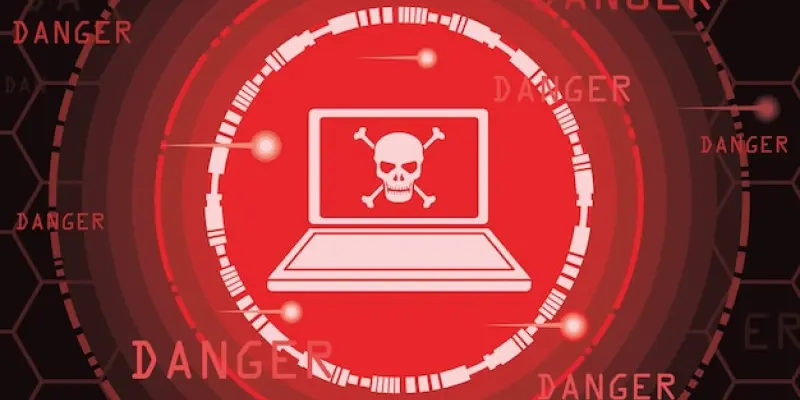In the evolving world of cybersecurity threats, attackers are continuously advancing their methods to infiltrate systems unnoticed, presenting significant challenges for organizations worldwide. Recently, an alarming development has been observed where hackers have cleverly disguised remote access malware as a legitimate Microsoft Edge service, allowing them to infiltrate and maintain unauthorized access across multiple network endpoints. This approach underscores the critical need for comprehensive visibility and prompt detection measures in modern cybersecurity infrastructures. The attackers’ sleight-of-hand in camouflaging malicious agents poses a considerable threat, demanding an adaptive defense mechanism to safeguard valuable data and resources.
The Ingenious Camouflage and Its Discovery
Disguised Malware Evades Detection
Hackers have creatively disguised malicious software to appear as a legitimate Microsoft Edge service, specifically the malicious Mesh agent. By positioning it under the path C:Program FilesMicrosoftMicrosoftEdgemsedge.exe, the software blends seamlessly with authentic applications, evading routine scrutiny by IT staff and automated monitoring systems. The discovery of this guileful intrusion began with Stephen Berger’s investigation into suspicious activities. Anomalous command-line arguments pointed towards the surprise presence of a MeshCentral agent, spotlighting the tactics employed by the attackers to seamlessly blend with legitimate processes.
MeshCentral, an open-source remote management tool, is often exploited by cybercriminals due to its robust capabilities. This tool enables attackers to execute commands, orchestrate file transfers, and manipulate system functions without user awareness. Once embedded, the malware operates under high privilege accounts, making detection difficult and removal arduous. Attackers use diverse techniques, such as creating unique installations to bypass security tools and using standard web ports to evade network alarms. The strategy effectively challenges existing defense mechanisms and emphasizes the necessity for continuous, automatic real-time monitoring to promptly detect such stealthy threats.
Tactics for Persistence and Evasion
The attackers’ arsenal includes modifying registry keys to ensure the malware’s persistence and deploying highly sophisticated evasion tactics. By communicating over standard web ports, the malware slips through conventional security filters unnoticed, posing significant threats to the unwary. These tactics illustrate a growing sophistication in cyberattacks, where even common software becomes a hidden trojan in a seemingly safe digital environment. Organizations are pressed to maintain heightened vigilance, ensuring all layers of their IT ecosystem are thoroughly monitored to detect any irregularities. Maintaining comprehensive asset transparency is pivotal. Stephen Berger’s team leveraged detailed asset and network visibility during their forensic investigation, enabling them to identify compromised endpoints promptly, trace the attackers’ routes, and quickly isolate infected systems to neutralize the threat. The incident served as a pivotal lesson in understanding the crucial role of asset and network visibility in managing incidents effectively. Organizations must reinforce their cybersecurity postures, recognizing that such persistent techniques can go undetected for prolonged periods if not addressed with proactive strategies.
Lessons Learned and the Road Ahead
Importance of Proactive Monitoring
As cyber threats grow more sophisticated each day, proactive monitoring coupled with rapid incident response must become a chief priority to preempt potential damages. The case of the disguised Edge threat is a stark reminder that even the most innocuous-looking services can conceal significant risks. Organizations are tasked with staying a step ahead, constantly refining their defensive measures to contend with evolving threats. Advanced monitoring tools, capable of real-time notifications and comprehensive data analytics, are indispensable to spotting vulnerabilities and impediments in an organization’s digital architecture. The need for robust cybersecurity infrastructure is ever-increasing, with threat intelligence becoming a vital component of strategic planning. By continuously updating threat assessment routines and implementing cutting-edge security technology, organizations can mitigate the potential for future breaches. This incident highlights the importance of integrating sophisticated tools adept at identifying unusual behavior patterns, reinforcing the proactive measures needed to combat cyber threats effectively.
Vigilance in the Face of Evolving Threats
In the fast-paced realm of cybersecurity threats, attackers are constantly evolving their strategies to penetrate systems undetected, posing significant challenges for entities globally. A particularly alarming trend has emerged, where cybercriminals ingeniously disguise remote access malware as a seemingly legitimate Microsoft Edge service. This deception enables them to gain entry and sustain unauthorized access across numerous network endpoints, often bypassing standard security protocols. This tactic highlights the pressing necessity for comprehensive visibility and swift detection measures within advanced cybersecurity frameworks. The craftiness of attackers in concealing malicious software underscores a substantial risk, necessitating adaptive and robust defense mechanisms to protect vital data and resources. As hackers refine their techniques, organizations must prioritize building resilient infrastructures, employing state-of-the-art detection technologies, and educating personnel to recognize and respond to potential cybersecurity threats effectively.

